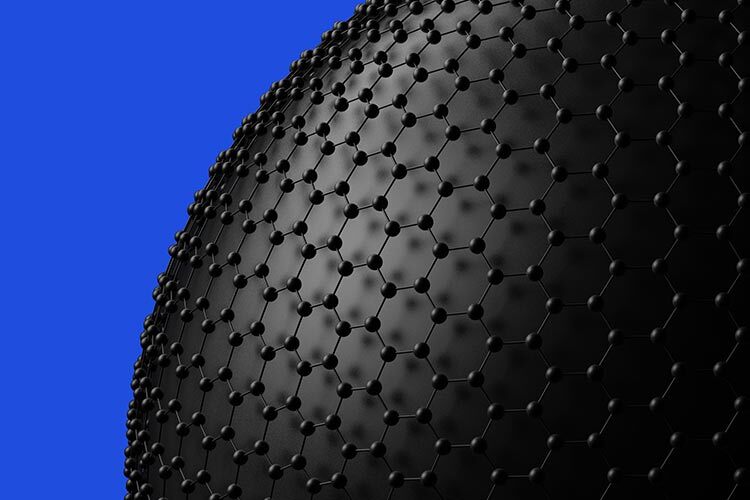A smart fabric capable of generating energy through movement and temperature changes is being developed by an international team of researchers, backed by the U.S. Office of Naval Research Global (ONRG). This innovative textile is designed to power communication systems and health monitoring devices.
Scientists expect the technology to be used in wetsuits for U.S. Navy personnel. Moreover, with some modifications, the fabric could be adapted for various applications, including dive fins, biosensor-equipped bras for female aviators, hovercraft skirts, inflatable boats, unmanned underwater drones, and flexible coatings for energy harvesting in robots operating both underwater and on land.
The research project, named Dual Envelope Multifunctional Fabric, is led by researchers from Tec de Monterrey, the Massachusetts Institute of Technology (MIT), and the Federal University of Ceará in Brazil. Their aim is to innovate a textile material based on polyethylene (PE). This material combines piezoelectric and thermoelectric effects, meaning it generates electric charges in response to deformation and thermal variations.
The U.S. Navy is funding the project, having selected it as one of the winners in the 2023 ONR Global-X Challenge in the category of Multifunctional Fabric for Survivable Platforms.
Luis Marcelo Lozano, a researcher at Tec, explained to TecScience that he and his colleagues are developing a textile prototype focused on the needs of divers as primary users, while also considering other applications relevant to survival environments.
“We aim to achieve multifunctionality using two types of components: a passive one, featuring the properties of polyethylene to provide protection against high-pressure depths and thermal regulation for low temperatures, and an active one with piezoelectric and thermoelectric fibers to generate electricity,” he elaborated.
Lozano emphasizes that their project was one of six chosen worldwide in this competition to receive funding and support.
Textile Material with Sustainable Properties
The textile being developed by the researchers consists of two layers of polyethylene fibers, bonded by a spacer—similar to a cavity—and interwoven with additional fibers that can embed other materials to generate energy.
The passive component features functionalities that do not require any energy source to operate. For instance, through a collaborative project with MIT, they have enhanced PE-based textiles with improved thermal characteristics, water absorption, and stain resistance compared to others in the fashion industry, such as cotton.
Traditionally, polyethylene has been overlooked for clothing due to its water-repellent chemical structure. However, by modifying its structural and surface properties, it can be harnessed to offer features that are even beneficial for a diving suit.
For example, the hydrophobic properties enable the creation of a functional spacer within the fabric, acting as a protector and thermal insulator to help keep the diver’s body warm despite the frigid temperatures found at depth.
“Polyethylene is a very straightforward material in terms of structure, primarily composed of carbon and hydrogen. It allows us to play a bit with heat, whether we make it transparent to thermal energy or modulate the size of the fibers to reflect it, thereby maintaining the body temperature within the suit,” says Lozano.
A Fabric That Generates Energy
On the other hand, the active component of the material, which is still under study, would be achieved through fibers capable of generating electricity. This energy could then power communication systems, health monitoring, and active thermal regulation of the suit, among other applications.
The first type of fibers is piezoelectric, which allow for “generating electricity from motion. We can envision that the diving suit generates this energy while the diver is in motion, effectively self-powering the system.”
These materials have polarization capabilities. Lozano explains that when mechanical deformation occurs, the separation of poles becomes more pronounced, leading to charge generation at the negative pole (electrons) on one side. This charge can then be transmitted to the desired device via a conductive element.
Meanwhile, thermoelectric fibers generate energy from temperature differences, such as that between the diver’s body and the surrounding water.
In this context, the researcher notes similarities to the functioning of a thermocouple, an industrial temperature-measuring device where positive and negative charges flow through a conductive material; here, the negative charges could also provide energy to a system.
Lozano mentions that the research team is still working on developing the fabric, with preliminary results already showing micro-watt outputs that can be multiplied based on the volume of a functional garment.
Currently, their goal is to optimize the fibers and generate enough energy to be detectable by characterization equipment, which would assist in more accurate measurement and management of electrical loads.
“Even if the fibers are few, just imagine if everything we wear could generate energy from movement or temperature differences—it’s promising for all the applications we could power.”
Leveraging Fabric Engineering
The researcher notes that the active functionality requires adding other materials to the polyethylene, such as PVDF (polyvinylidene fluoride), a polymer with piezoelectric characteristics.
However, when other materials are incorporated into the polyethylene fibers, some functionalities do not operate as intended, including passive thermal regulation. The team has been working to address this through a fabric engineering approach that enables various effects within a single material.
“The most interesting part of the project is that it doesn’t just rely on the fibers; it also involves how we construct the fabric. It’s essentially made up of fibers that can be embroidered or structured in such a way that the fabric fulfills its multifunctionality,” Lozano explains.
This fabric engineering also encompasses the different layers of the textile. One layer interacts with the human body, while another interfaces with water, each serving distinct functionalities. Between these layers lies the spacer, which could add another property to the fabric.
Lozano mentions that the project is expected to be completed in about a year. As a result, they aim to produce a lightweight and flexible material that is still robust enough to withstand deep-sea conditions.
This material could serve as an alternative to neoprene, commonly used in diving suits but lacking the features of a smart textile, such as energy generation.
Beyond diving suits, Lozano emphasizes that the technology behind this textile material could be beneficial for other types of survival gear, such as for firefighters, providing thermal insulation and health monitoring functions.
“This development aims to help society as a whole. It was proposed as a solution to a challenge faced by the naval sector, but I see potential for commercial use as we move toward clothing that helps monitor vital signs, not just saving energy but generating it for various applications,” he remarks.
Were you interested in this story? Do you want to publish it? Contact our content editor to learn more marianaleonm@tec.mx
















